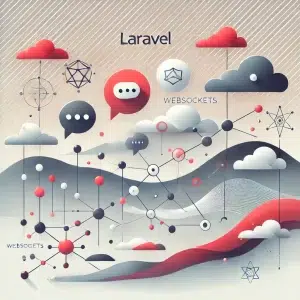Introduction
Real-time applications like chat systems, live notifications, and collaborative tools have become essential in modern web development. Laravel and WebSockets offer a powerful combination for building such applications. This guide explores how to create efficient, scalable, and secure real-time applications with Laravel and WebSockets.
What Are WebSockets?
WebSockets enable full-duplex communication between the client and server over a single, long-lived connection.
Advantages of WebSockets
- Low Latency: Real-time data exchange.
- Efficiency: Reduced overhead compared to HTTP.
- Persistent Connection: Eliminates repeated handshake requests.
Why Choose Laravel for WebSockets?
Laravel simplifies WebSocket implementation with tools like:
- Laravel Echo: A JavaScript library for real-time events.
- Pusher: A WebSocket-based service for broadcasting events.
- BeyondCode Laravel WebSockets: A self-hosted WebSocket server.
Setting Up WebSockets in Laravel
1. Install the Laravel WebSockets Package
composer require beyondcode/laravel-websockets
2. Publish and Configure WebSockets
php artisan vendor:publish --tag=websockets-config
Update config/websockets.php with your settings.
3. Run WebSocket Server
Start the server using Artisan:
php artisan websockets:serve
Building a Real-Time Application
Example: Real-Time Chat
- Broadcast Events Create an event to broadcast messages:
php artisan make:event MessageSent
- Broadcast Logic Implement the broadcast in the event class:
public function broadcastOn()
{
return new Channel('chat');
}
- Listen to Events Use Laravel Echo to subscribe to channels:
Echo.channel('chat')
.listen('MessageSent', (e) => {
console.log(e.message);
});
- Secure WebSocket Connections Use Laravel Sanctum or Passport for authentication.
Features of Laravel WebSockets
1. Dashboard
Monitor connections and event logs.
2. Event Broadcasting
Broadcast server-side events to clients in real-time.
3. Private and Presence Channels
Control access and allow user tracking.
4. Scalability
Supports clustered WebSocket servers for high traffic.
Comparative Table: WebSocket Tools
| Tool | Feature | Use Case |
|---|---|---|
| Laravel WebSockets | Self-hosted server | Custom real-time apps |
| Pusher | Hosted WebSocket service | Quick setup with less config |
| Socket.IO | Node.js-based WebSockets | Cross-platform compatibility |
Key Takeaways
- Laravel and WebSockets are ideal for building real-time applications.
- Use Laravel Echo for seamless integration with JavaScript.
- Secure WebSocket connections to protect user data.
FAQs
Q1: What is Laravel Echo?
Laravel Echo is a JavaScript library that works with WebSockets to listen for server-side events.
Q2: Can I use WebSockets with Laravel on shared hosting?
Yes, but a self-hosted WebSocket server like Laravel WebSockets may require additional configuration.
Q3: How do I secure WebSocket connections?
Use HTTPS, authentication middleware, and token-based authentication.
Q4: Is WebSocket suitable for large-scale applications?
Yes, with proper scaling and load balancing, WebSockets can handle high traffic.
Q5: Can I integrate WebSockets with Vue or React?
Absolutely. Laravel Echo works seamlessly with Vue and React.
Conclusion
Building real-time applications with Laravel and WebSockets combines the power of PHP and modern communication protocols. Whether you’re creating a chat application, live notifications, or collaborative tools, Laravel offers the tools and flexibility needed for success.
For detailed documentation, visit the Laravel WebSockets Documentation and Pusher.


